by Maureen Buja, Interlude
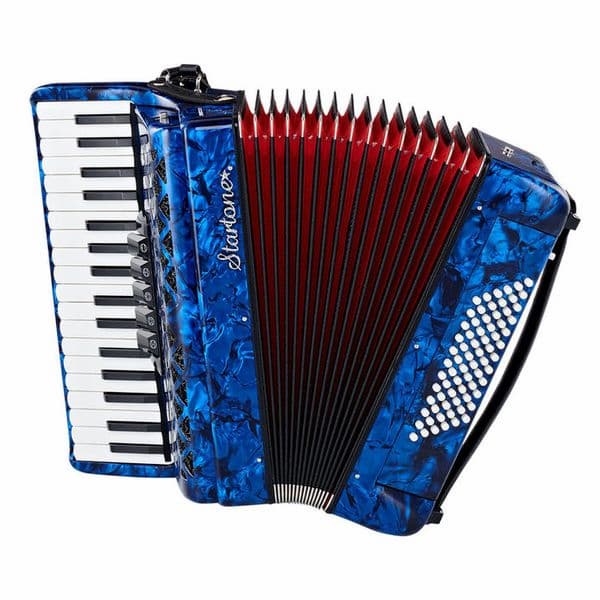
Piano Accordion (Startone 72 MKII)
The button accordion.
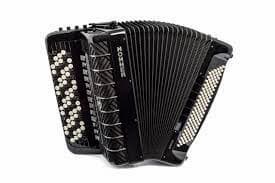
Chromatic Button Accordion (Hohner Mattia IV)
The instrument is held by two straps around the shoulders and is played in front of the body. For most accordions, the same pitch is played when you open or close the bellows, but some instruments will play different notes depending on the direction of the bellows’ motion.
The accordion is a 19th-century instrument invented in Germany by Christian Friedrich Ludwig Buschmann around 1822.
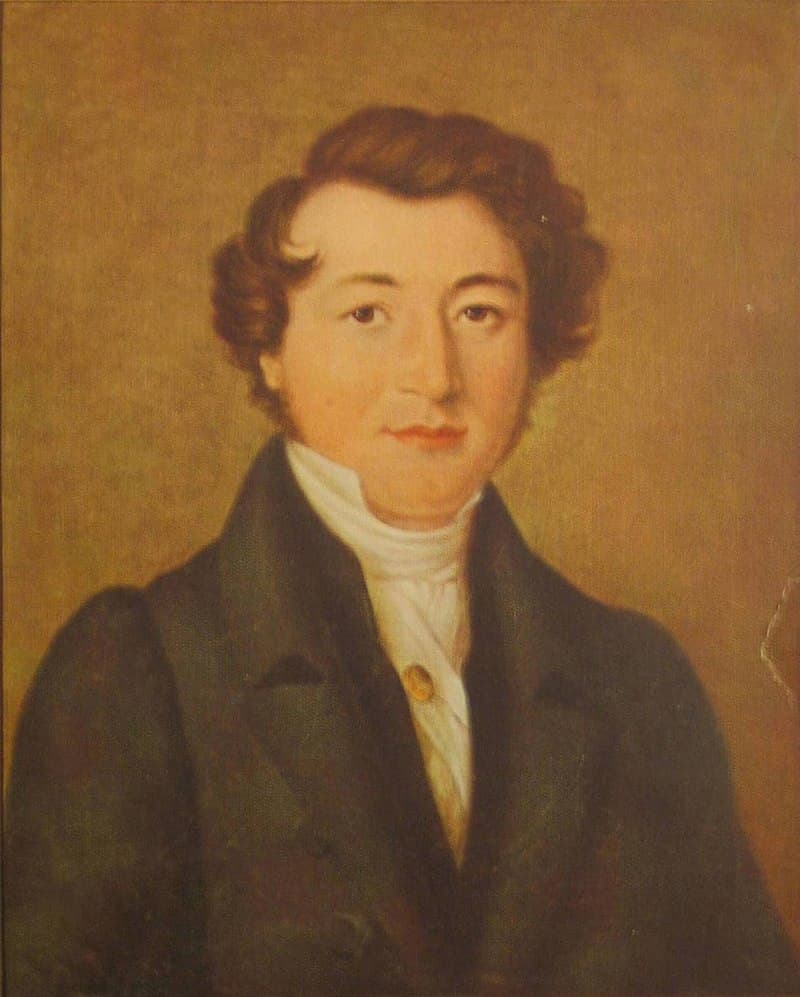
Christian Friedrich Ludwig Buschmann
From Germany, the instrument went to Russia, with the earliest known ones being made in the 1830s. By the late 1840s, two Russian manufacturers were producing some 10,000 instruments a year. By 1828, the instrument was in England and in New York by the mid-1840s.
For classical music, it wasn’t until the 1960s that works for accordion and orchestra were being written, and Poland has been a particular center for this genre.
Bronisław Kazimierz Przybylski’s Concerto polacco was completed in 1973 and is one of the most popular of the accordion concertos.
In Denmark, the composer Per Nørgård has been an important contributor to the genre. His 1964 work, Introduction and Toccata, developed from a first version in 1952 that accordionists agreed as being unplayable on current instruments. The 1964 revision captured the idiosyncratic methods needed for performances.
Maltese composer Charles Camilleri (1931–2009) was also an accordion virtuoso and international performer. His 1968 Concerto for Accordion and String Orchestra was originally intended as a didactic work for his students. The work includes both classical forms (a first movement sonata-allegro) and local references (the main subject of the first movement is close to a Maltese traditional melody). The final movement was intended to be not only a brilliant finish but also a nod to the 12-music of the time.
Finnish composer Erkki-Sven Tüür (b. 1959) had to be urged for five years to consider the accordion as a solo instrument for a concerto. He had to change his thinking of the instrument as purely for folk dances to something that had an orchestral connection. In its upper register, the accordion can sound like the wind instruments, and in its middle register, is closer to the strings and the composer used these sounds in different combinations.
For many people, it was the Tango Nuevo of Astor Piazzolla that brought the accordion (or in Piazzolla’s case, the bandoneon) to the performing stage.
The bandoneon is a middle instrument between the hand-sized concertina and a full accordion. It is named for its inventor, Heinrich Band, who intended it for religious or popular music accompaniment. It made its way to Argentina around 1870, where it became one of the distinctive sounds of tango music.
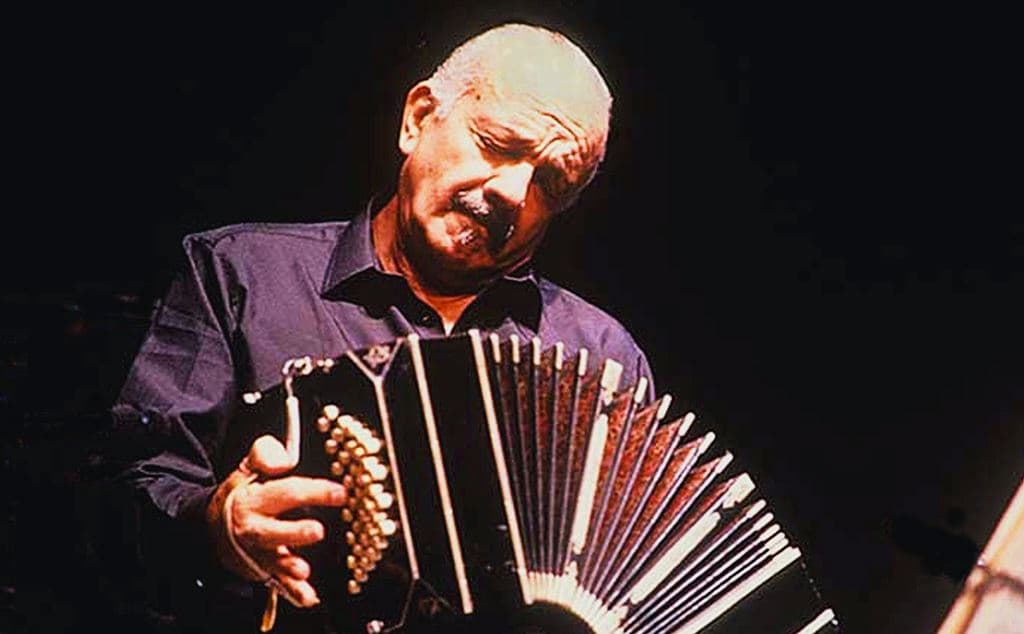
Astor Piazzolla
His Concerto for Bandoneon, Percussion, and String Orchestra of 1979 is very different from the European concertos we’ve heard above—it immediately incorporates the rhythm of tango and its melancholic alternation between major and minor, expressive solo lines and other emotive details.
The accordion has long been associated with France, be it from French accordionists on street corners or the accordionist Yvette Horner, who played her accordion along the route of the Tour du France in the 1950s and 1960s (and who was caricatured in Les Triplettes de Belleville).

Yvette Horner
A new work in the French tradition is Thibault Perrine’s Capriccio for Accordion and Orchestra. The work makes reference to the former music activities on the Place de la Bastille where musicians from the Auvergne encountered accordionists coming up from Italy. Together, they created a new dance music known as the musette and Perrine makes that the center of his work.
The lack of repertoire has made transcriptions central to the performance of classical music by accordionists. Satie’s Gnossienne No. 1, originally for piano, takes on a different life with accordion, vocals, trombone, and three melodicas (another free-reed instrument that mixes the harmonica with a keyboard).
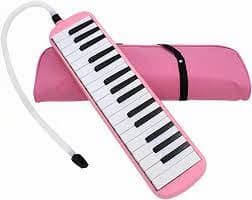
Melodica
Or some Bach for accordion and saxophone.
And Rameau keyboard music arranged for accordion.
Japanese accordionist Mie Miki has been very active in bringing not only Baroque keyboard music to the accordion but also vocal music, such as this Dowland work, arranged for viola and accordion.
As a new instrument to the classical stage, the accordion has had to fight for recognition as a serious instrument. Its versatility in sound, melding with elements of the orchestra, has been a benefit, and as composers begin to understand how many ways it can contribute to the orchestral sound world, its repertoire will grow. Rethink the accordion – it’s more than polkas and popular music. It has become a real voice of serious music.
No comments:
Post a Comment